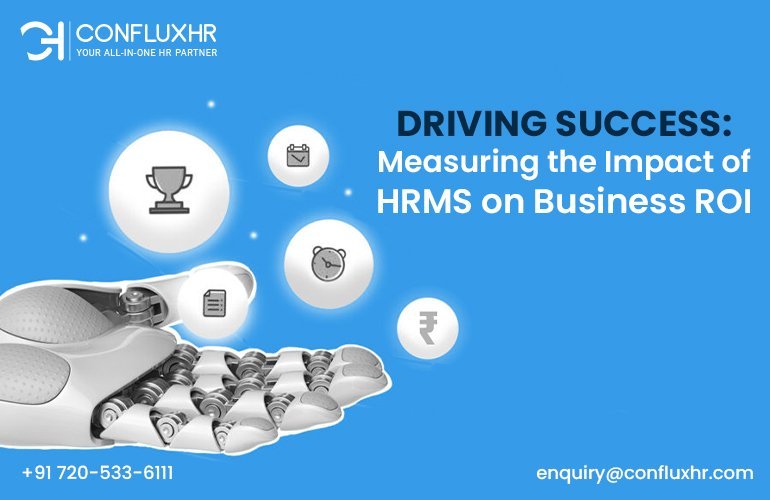Investing in HR technology has become essential for businesses seeking to optimize their human resource management practices. However, to truly understand the value and impact of these investments, organizations need to measure their return on investment (ROI). This blog will delve into the significance of measuring HRMS ROI and provide insights into evaluating the value and impact of HR technology investments. By understanding and analyzing the ROI, businesses can make informed decisions to optimize their HRMS implementation and drive long-term success.
Identifying Key Metrics for Measurement
To measure HRMS ROI effectively, organizations must identify key metrics aligning with their business goals. These metrics may include cost savings, efficiency improvements, reduction in manual tasks, increased compliance, and enhanced data accuracy. By focusing on these metrics, businesses can track and quantify the tangible benefits of their HR technology investments.
Understanding the Impact on Cost Savings and Efficiency
One of the primary areas where HRMS can deliver significant ROI is cost savings and efficiency improvements. Automating manual HR processes, such as payroll management and benefits administration, reduces the need for extensive manual labor and minimizes the risk of errors. By streamlining these processes, businesses can achieve cost savings, optimize resource allocation, and enhance operational efficiency.
Evaluating the Impact on Employee Productivity and Engagement
HRMS can have a profound impact on employee productivity and engagement. Employees can access and manage their HR-related information more efficiently with self-service functionalities and user-friendly interfaces. This empowers employees, reduces administrative burdens, and fosters a culture of self-sufficiency. Improved access to information and streamlined processes lead to increased productivity and higher levels of employee engagement, ultimately contributing to overall organizational success.
Considering the Long-Term Strategic Value
While measuring immediate cost savings and efficiency gains is crucial, it is equally important to consider the long-term strategic value of HR technology investments. HRMS can provide organizations valuable insights into workforce trends, employee performance, and talent management. By leveraging this data, businesses can make data-driven decisions, identify areas for improvement, and develop strategies for long-term success. The strategic value of HR technology investments extends beyond immediate ROI and contributes to the organization’s overall growth and competitiveness.
Making Data-Driven Decisions
Measuring HRMS ROI enables businesses to make data-driven decisions regarding their HR technology investments. By analyzing the collected data and evaluating the ROI metrics, organizations can identify areas of improvement, optimize HR processes, and allocate resources effectively. This data-driven approach ensures that future HR technology investments align with business goals and provide the desired outcomes.
Conclusion
Measuring HRMS ROI is crucial for organizations seeking to evaluate the value and impact of their HR technology investments. Businesses can make informed decisions that drive success by identifying key metrics, understanding the implications for cost savings and efficiency, evaluating employee productivity and engagement, and considering the long-term strategic value. Data-driven insights derived from measuring HRMS ROI enable organizations to optimize their HR technology investments, enhance operational efficiency, and foster a thriving work environment. Embrace the practice of measuring HRMS ROI to unlock the full potential of HR technology and propel your organization forward.


